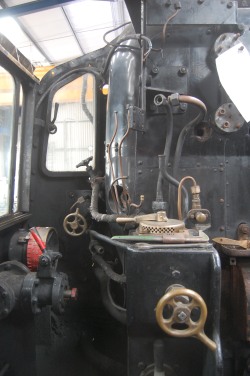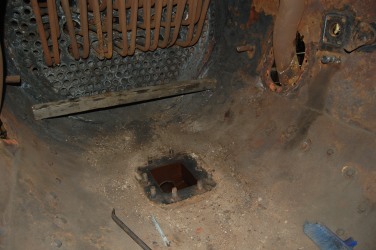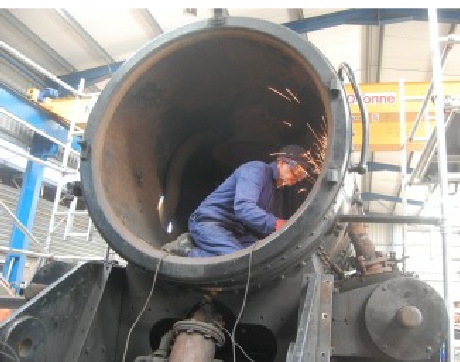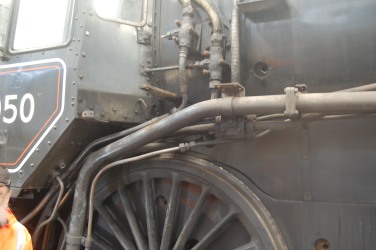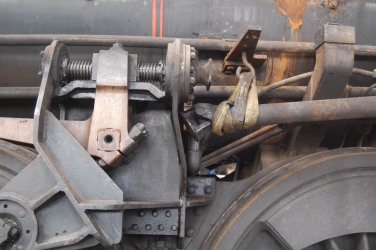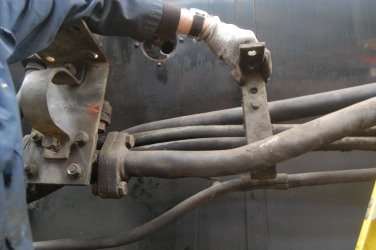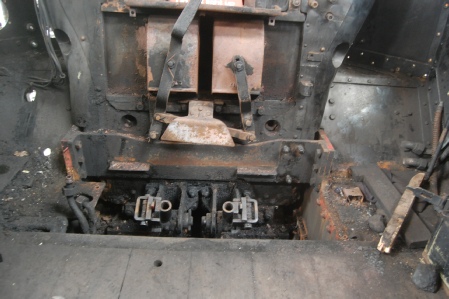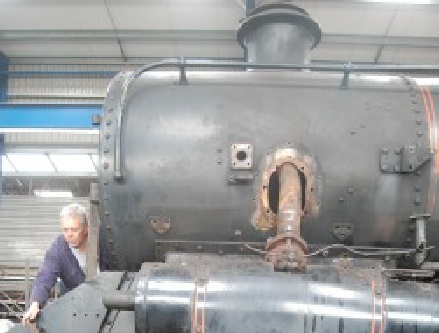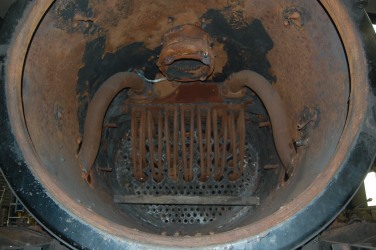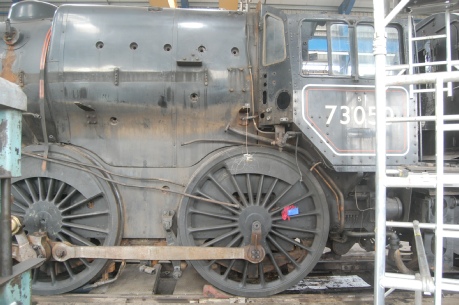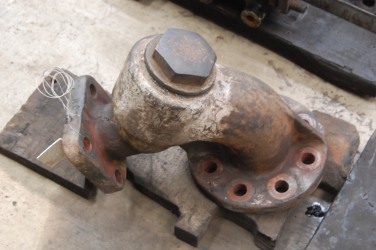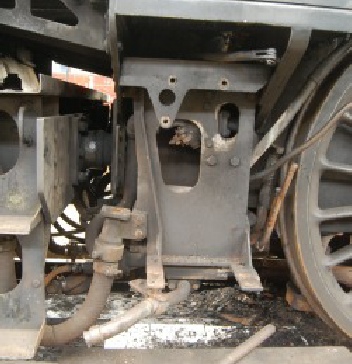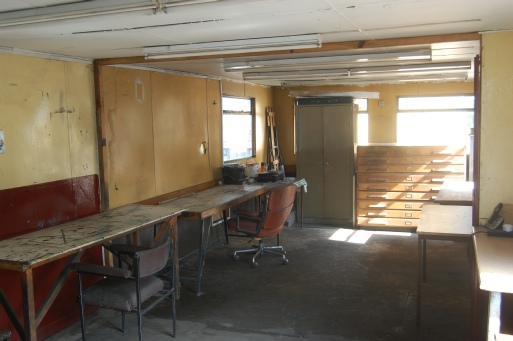31st May 2017.
Same old tale of hard work in some areas with precious little to show although it’s thought that now there are only about 20 bolts connecting the boiler to the frames. In other parts, great strides are being made and a glimpse inside the storage container shows that much has been removed.
Graham Batho, Andy Horne, Clifford Owen and Pete Gregory have all worked shifts to progress the saddle bolt removal, the current focus is grinding off the bolt heads. All except those deep inside, against the tubeplate, are now ready for a big bashing session.
In a ‘spare’ moment, Pete also heated one of the Steam pipe nuts to red hot, but still no movement there.
In the cab John Wooton, Dave Myall and John Wood continued (JWd for morning only, as he was deputed as fireman for 34081 in the afternoon) removing components and today the firebox doors and the gauge frame offsets came out. Earlier in the week, Alan Collins had single-handedly removed the frame spacer across the firebox rear and two the of the four tie-bars that hold down the firebox.
Roland has measured up the patch for the tender coal space and has cut the metal needed and he is confident that welding will be in progress next week.
Underneath the cab on the RHS, Kevin and DavidB continue to burrow southward but have hit a major block - an injector support bracket with hidden attachments. This is a subassembly that is going to need removal en-bloc. It is of course, heavy and the connecting nuts/bolts are rounded and rusted.
Philip and Alastair removed sundry smokebox attachments and have started removing brackets from the boiler side - claiming it was easy!
Paul Ian and Philip had a major success removing the RH clack valve but its LH partner is proving less compliant. More heat is obviously required here.
Away for the loco, quantities of paint required have been estimated and quotes are expected very soon from candidate suppliers. A poll is being run in the Members Newsletter to help decide which livery should be adopted this time around.
Sundry cleaning tools and materials are being sourced and the 92 Squadron ‘communal cleaning tank’ has been commandeered for first phase parts cleansing.

